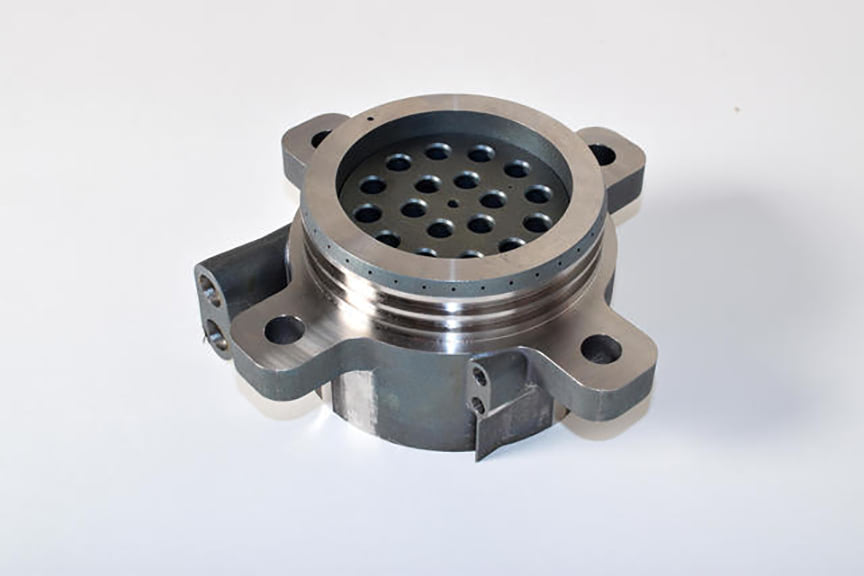When the engineers at the German Aerospace Center (Deutsches Zentrum für Luft- und Raumfahrt, or DLR) Institute of Structures and Design were tasked with designing the liquid rocket engine injector head for the European Union Horizon 2020 project called SMall Innovative Launcher for Europe (SMILE Project), they turned to 3D printing knowing that it could easily handle the complex design.

In rocketry, solid fuel is a common propellant because it burns more predictably than liquid fuels and it can be stored for long periods without much degradation. Modern rocketry has embraced reusability, and since solid fuels do significant damage to the rocket, liquid fuels are the preferred option for today’s reusable rockets. Refurbishing and reusing rockets allows DLR to offer more cost-effective options for small satellite launchers. But reusability comes at the cost of increased complexity, which is why the team turned to AM.
Managers of the DLR team Markus Kuhn and Ilja Müller partnered with 3D Systems’ Customer Innovation Center (CIC) in Leuven, Belgium to design the injector head. “Based on the success of space related initiatives involving DMP (Direct Metal Printing), we thought that 3D Systems was perfectly suited for providing the design-for-manufacturing aspects of the injector head, with an eye on new possibilities for sensor integration and fuel and coolant distribution,” said Kuhn. By 3D printing the injector head, they were able to reduce the assembly’s parts from 30 to 1, achieving a weight reduction of 10%. The monolithic component is not only stiffer and lighter but also includes cooling channels that improve efficiency and propulsion. As it’s printed in LaserForm Ni718 (A), an Inconel alloy, it’s resistant to oxidation and corrosion. That’s especially important because the injector head is where the fuel and the oxidizer enter the combustion chamber. The material performs well at cryogenic temperatures up to 700°C, which is equally important since it’ll be going into space.
Koen Huybrechts, a project engineer for 3D Systems, knew that their design had performance-enhancing features that could only be produced with a highly accurate metal 3D printer so he helped the DLR team choose the ideal technology – Direct Metal Printing.
Beyond improving mechanical and thermal performance, consolidating the injector head down to a single part drastically shortened the lead time of production by bypassing the sourcing and assembling of all of those different parts. The benefits don’t stop there. Without the design restrictions imposed by traditional manufacturing methods, the engineers could implement coaxial injection techniques that optimize oxidizer-fuel mixing via a double-swirl shape. Such a shape would be next to impossible to manufacture without 3D printing.
Computational simulations indicated that the design produced favorable mixing and combustion efficiencies, and hot-fire testing of the printed part showed the same results, validating both the accuracy of simulating 3D printable designs and the functionality of the 3D printed injector head itself. Müller doesn’t mince words about the benefits of using AM for this project, stating, “We think we can safely say that the integrated functionalities of the 3D printed injector head are superior and the production times and costs lower when compared to state-of-the-art equivalent parts manufactured via conventional methods.”
Images courtesy of 3D Systems

 Direct Metal Printing Design Guide
Direct Metal Printing Design Guide
 NuVasive Taps AM Ecosystem to Optimize Spine Implant Technology
NuVasive Taps AM Ecosystem to Optimize Spine Implant Technology
 Metal 3D Printed Conformally-Cooled Injection Mold Increases Production Rate by 30%
Metal 3D Printed Conformally-Cooled Injection Mold Increases Production Rate by 30%
 Optimize Fluid Dynamics with 3D Printing
Optimize Fluid Dynamics with 3D Printing








